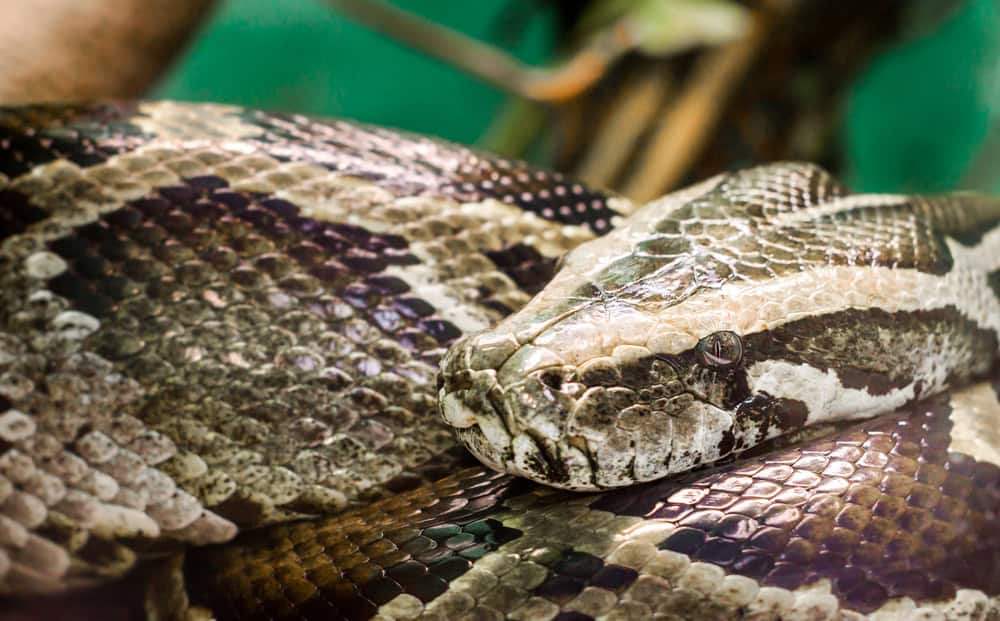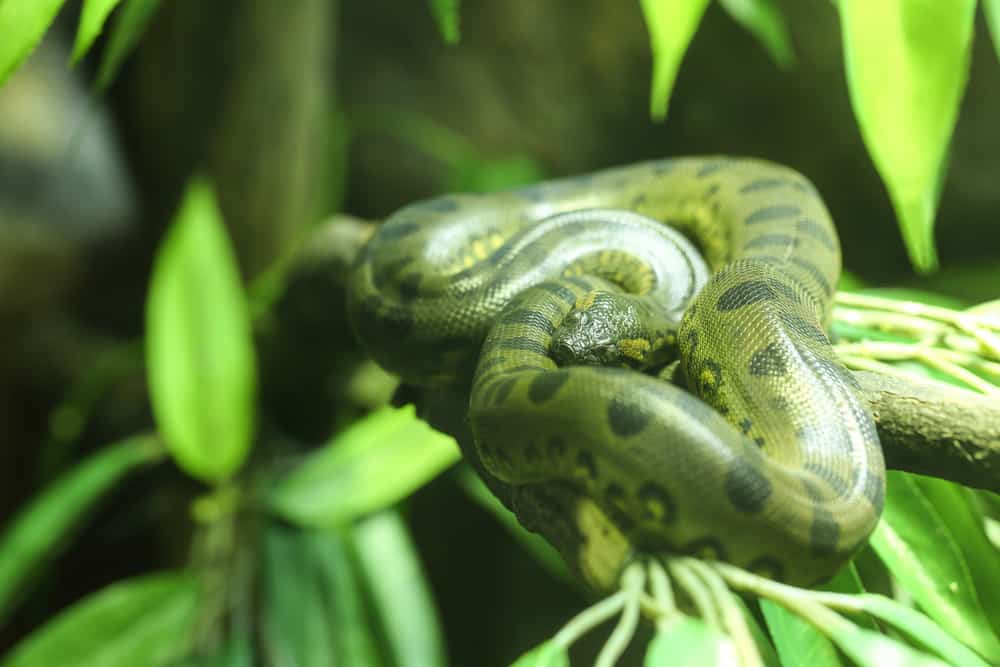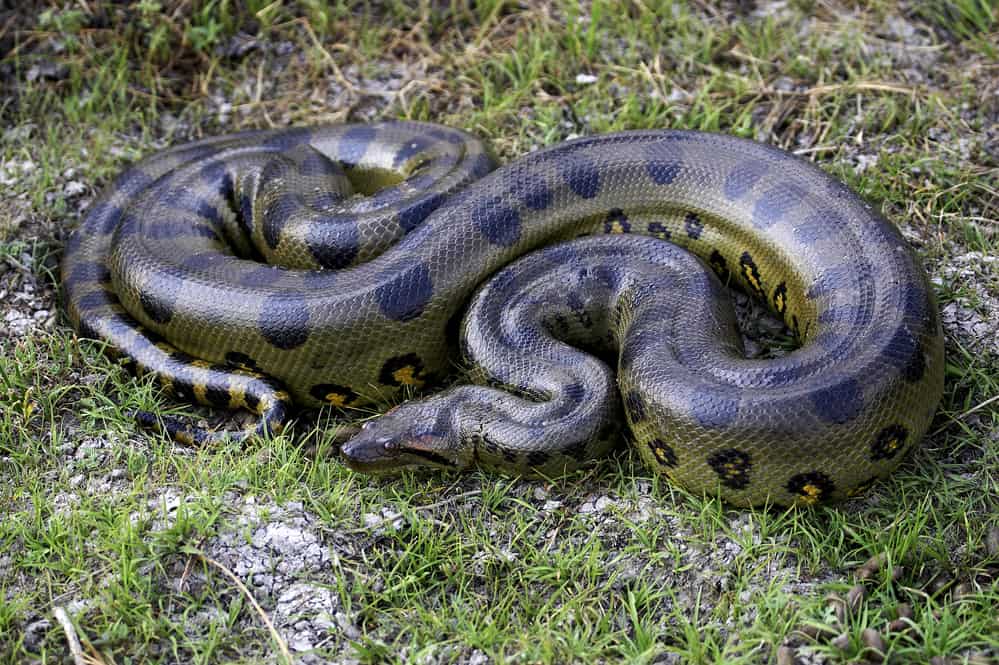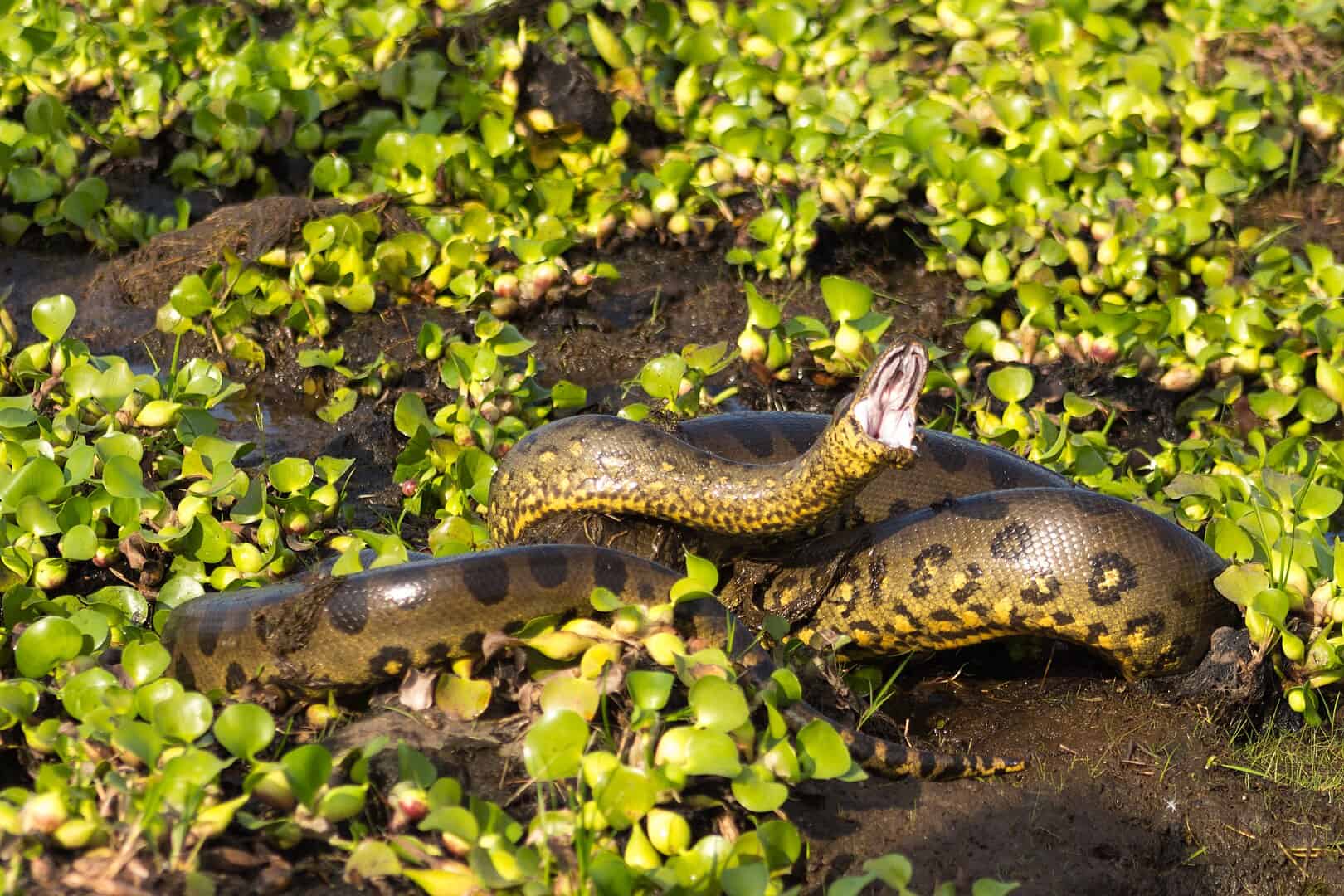The legend of a 50-foot anaconda primarily stems from accounts by Belgian pilot Remy Van Lierde, who claimed to have seen an enormous snake while flying over the Congo in 1959. Van Lierde reported spotting a massive anaconda that measured an estimated 50 feet in length as it lay partially submerged near a river. He even claimed to have photographed the snake from his aircraft.
Examination of the Evidence

Photographic Proof

While Van Lierde’s photograph exists, it is inconclusive. The photo shows a large snake, but determining its exact size from an aerial shot is challenging. Critics argue that the snake’s size could be exaggerated due to the angle, distance, and lack of scale reference in the image. Moreover, the photograph’s quality is not sufficient to provide definitive proof of a 50-foot anaconda.
Biological Possibility

Anacondas, particularly the green anaconda (Eunectes murinus), are known to be the largest and heaviest snakes in the world. The largest verified specimens can reach lengths of 20 to 30 feet. While a 50-foot anaconda is theoretically possible, it would be an extreme outlier, far exceeding the typical size range. The largest snakes, including reticulated pythons and anacondas, have well-documented maximum sizes that fall short of the 50-foot mark.
Scientific Skepticism

Herpetologists and snake experts generally view the 50-foot anaconda story with skepticism. No scientifically verified anaconda or any other snake has ever been documented at such a length. Additionally, an anaconda of that size would require an enormous amount of food and a suitable habitat to support its growth, making it unlikely to go unnoticed in the wild.
The Power of Myth and Legend

The story of the 50-foot anaconda persists partly because of humanity’s fascination with giant creatures and the mysteries of unexplored regions. The Congo, with its dense rainforests and remote areas, provides a perfect backdrop for such tales. Stories of enormous snakes, giant crocodiles, and other mythical creatures have been part of various cultures for centuries, often blending fact with fiction.
The Impact of Anecdotal Evidence

While anecdotal evidence like Van Lierde’s account can be compelling, it is not sufficient to establish the existence of a 50-foot anaconda. Scientific documentation requires repeatable observations, physical evidence, and peer-reviewed research. Without these, such stories remain intriguing but unproven.
What is the scientific name of the green anaconda?

The scientific name of the green anaconda is Eunectes murinus.
How long can green anacondas grow?

Green anacondas can grow up to 20 to 30 feet in length, making them one of the longest snake species in the world.
How much can an anaconda weigh?

Anacondas can weigh over 500 pounds, with some of the largest individuals reaching this impressive weight.
Where do anacondas primarily live?

Anacondas are primarily found in the tropical rainforests, swamps, and marshes of South America, especially in the Amazon and Orinoco basins.
What do anacondas eat?

Anacondas are carnivorous and prey on a variety of animals, including fish, birds, mammals (such as capybaras and deer), and even caimans.
How do anacondas kill their prey?

Anacondas are constrictors, meaning they wrap around their prey and squeeze tightly until the prey suffocates.
Can anacondas swim?

Yes, anacondas are excellent swimmers and spend a significant amount of time in the water, where they are most agile and efficient hunters.
How do anacondas reproduce?

Anacondas are ovoviviparous, meaning females give birth to live young rather than laying eggs. The female retains the eggs inside her body until they hatch.
How many offspring can a female anaconda produce?

A female anaconda can give birth to a litter of 20 to 40 live young, although litters of up to 100 have been reported.
Are anacondas dangerous to humans?

While anacondas are capable of harming humans, attacks are extremely rare. They are generally reclusive and avoid human contact.
How long do anacondas live?

Anacondas can live up to 10 years in the wild, although they may live longer in captivity.
Why are female anacondas larger than males?

Female anacondas are larger than males due to sexual dimorphism. This size difference helps females carry and produce more offspring.
What adaptations help anacondas hunt in their environment?

Anacondas have powerful bodies for constricting prey, camouflaged skin for blending into aquatic vegetation, and sensitive heat-sensing pits to detect warm-blooded prey.
How do anacondas digest their food?

© Egor Kamelev: https://www.pexels.com/photo/closeup-photo-of-anaconda-751676/
Anacondas have highly efficient digestive systems that allow them to break down and absorb nutrients from large prey, taking days or even weeks to digest a meal fully.
What is the largest verified anaconda on record?

The largest verified anaconda on record was over 29 feet long and weighed about 550 pounds, though unverified reports suggest even larger specimens exist.
Conclusion

The tale of a 50-foot anaconda in the Congo continues to capture the imagination, but it lacks definitive scientific backing. While anacondas can grow to impressive sizes, reaching lengths of 50 feet is highly unlikely based on current evidence. The story remains a fascinating piece of modern folklore, highlighting the allure of the unknown and the enduring human fascination with giant serpents. Until more concrete evidence surfaces, the 50-foot anaconda will remain a legendary creature of the Congo.
Join our Forum for free today!

- 15 Loudest Animals In The World - July 25, 2024
- 13 Animals That Kill Humans Often - July 25, 2024
- 10 Ways To Live More Sustainably - July 25, 2024


R J Thill
Friday 14th of June 2024
Anacondas do not live in the Congo. They live in South America.